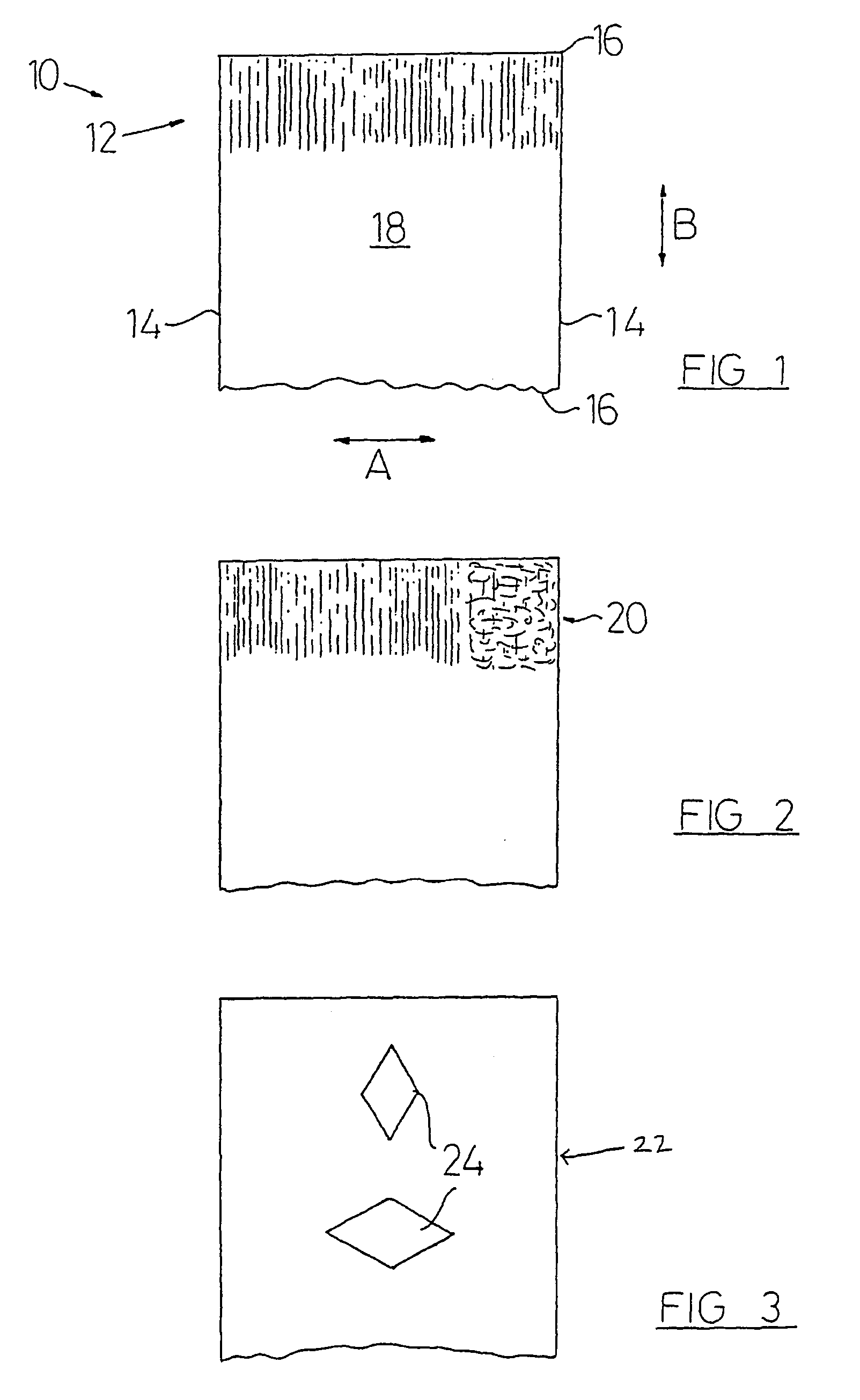Method of making a textile material and textile material made thereby
- Summary
- Abstract
- Description
- Claims
- Application Information
AI Technical Summary
Benefits of technology
Problems solved by technology
Method used
Image
Examples
Example
[0030] The method according to the present invention employs the steps of choosing a warp-knitted, weft knitted or woven base fabric. In this example, the fabric is a weft-knitted fabric (one by one rub knit) made of texturised polyester and is of 28 gauge. The weft fabric includes a single yarn with interlocking loops which builds up the fabric. The threads running across the fabric are called “causes” or “warp”. The threads running longitudinally of the fabric are called “wales” or “weft”.
[0031] A coating is applied to the fabric using the “Metatran”™ foil transfer system. This system utilises a screen printable adhesive and a heat transfer foil, and is used for the production of mirror-finished metallic prints commonly referred to as metallic lame fabrics. There are two procedures of making a textile material using the Metatran system.
[0032] The first procedure is to apply or print the adhesive directly onto the fabric. The adhesive is then set, for example in a convection oven...
PUM
| Property | Measurement | Unit |
|---|---|---|
| Length | aaaaa | aaaaa |
| Fraction | aaaaa | aaaaa |
| Stretching force | aaaaa | aaaaa |
Abstract
Description
Claims
Application Information
 Login to View More
Login to View More - R&D
- Intellectual Property
- Life Sciences
- Materials
- Tech Scout
- Unparalleled Data Quality
- Higher Quality Content
- 60% Fewer Hallucinations
Browse by: Latest US Patents, China's latest patents, Technical Efficacy Thesaurus, Application Domain, Technology Topic, Popular Technical Reports.
© 2025 PatSnap. All rights reserved.Legal|Privacy policy|Modern Slavery Act Transparency Statement|Sitemap|About US| Contact US: help@patsnap.com

